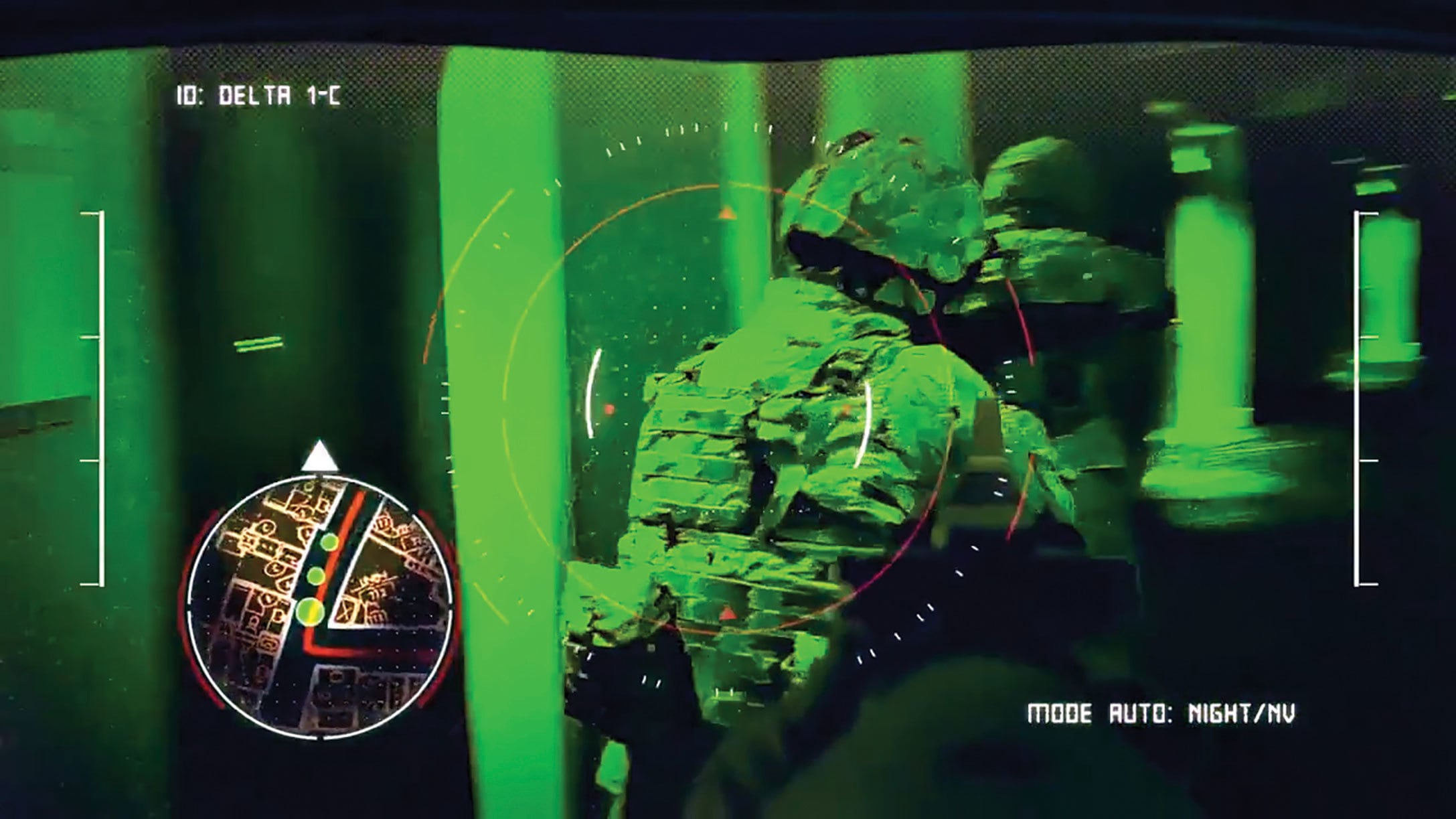In less than two years, the Army expects to have advanced simulators at four to five installations that can offer connected, realistic combat training for everyone from the dismounted soldier to a tank commander to a helicopter pilot.
In four years, those same hi-fidelity trainers should be at all major Army facilities, said Maj. Gen. Maria Gervais in remarks to media last week.
The next group of simulators and virtual reality/augmented reality-based trainers are being used, tested and developed by soldiers and some contracts are expected to be awarded starting this summer.
One of the early projects taken over by the Cross Functional Team-Synthetic Training Environment, commanded by Gervais, is already fielded at Fort Drum, New York with the 10th Mountain Division.
RELATED

It’s now at seven Army installations, said Christina Bell, product manager for the Special Operations Forces Training Systems at Program Executive Office-Simulation Training and Instrumentation.
That’s the Squad Advanced Marksmanship Trainer. The SAM-T for the first time gives a squad the ability to move and shoot together in a room, around obstacles, untethered.
The system was prioritized to meet a gap found in the close combat formations when the CFT-STE worked with the Pentagon’s Close Combat Lethality Task Force, Gervais said. Funding helped push the system forward and get it to units.
The SAM-T is expected to evolve over the next few years to remove the wall-based projection screen common to most marksmanship trainers and instead use VR-style goggles that link up soldiers regardless of the area they’re working. That effort will be the Soldier/Squad Virtual Trainer.
The more advanced pieces of the simulations puzzle are slated to see contracts hit this summer, including the Reconfigurable Virtual Collective Trainer, which will be a trainer for both Army and Marine air and ground systems from helicopters to tanks.

The Army expects those devices to not only be single-system simulators but be able to switch up to different systems, saving on equipment.
And they’ve got to be much smaller.
Current systems require several soldiers to travel to where they reside and take up the space of a semi-tractor trailer, said Col. Marcus Varnadore, project manager for the CFT-STE.
Soldiers at Fort Carson, Colorado, and Fort Riley, Kansas evaluated both the Squad Reconfigurable Trainer-Air and Ground, respectively, in April.
Putting all of these dismounted, ground and aviation systems together is the Common Synthetic Environment. The piece of that the user actually sees is called “One World Terrain.”
The OWT is a linchpin for making training go beyond imagined locations to real-world areas. Currently, Gervais said soldiers are collecting actual terrain maps from scanning locations such as portions of the National Training Center at Fort Irwin, California.
They can then run through scenarios, first-person shooter video-game style, or use the virtual terrain for route planning, line-of-sight analysis and mission planning.
Lower-grade versions of this have been used by Marines for the past couple of years but only rolled out across the forces in the past year.
The full OWT will be a much higher-fidelity version. Meaning better graphics, more realistic response and deeper software analytics to help leaders from the squad upward to better see how troops are performing on mission sets.
Soldiers from three different divisions, the National Training Center, 3rd Battalion, 7th Special Forces; 2nd Battalion, 4th Marine Regiment and Navy SEALs are all using and evaluating OWT now, Gervais said.
Todd South has written about crime, courts, government and the military for multiple publications since 2004 and was named a 2014 Pulitzer finalist for a co-written project on witness intimidation. Todd is a Marine veteran of the Iraq War.







